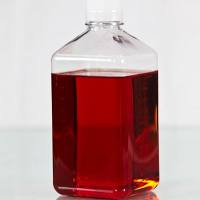Defined Media for H. pylori
互联网
738
Helicobacter pylori has been widely studied since its discovery in 1982 by Marshall and Warren (1 ), but many aspects of its structure, metabolism, and physiology, including its specific growth requirements, are still largely unknown, The organism is generally grown in complex media containing tissue extracts (e.g., of brain or heart) or proteolytic enzyme digests of meat or casein supplemented with blood or serum, which has made the metabolic pathways utilized by the bacterium difficult to determine. For example, although early studies based on acid formation from sugars and detection of preformed enzymes found no evidence of saccharide fermentative pathways (2 ,3 ), more recent evidence indicates that H. pylori does indeed catabolize sugars. In a series of studies, Mendz, Hazell, and colleagues found clear evidence for the pentose phosphate pathway (4 ), glucokinase activity (5 ), and the fermentation of glucose to lactate (6 ).








